How and when a hydrostatic test is conducted on standpipes and sprinkler systems
A fire protection system requires regular inspection and testing to ensure it works in an emergency, and one of the essentials is a hydrostatic test, also known as a functionality test. The National Fire Protection Association (NFPA) defines a hydrostatic test as “A test of a closed piping system and its attached appurtenances consisting of subjecting the piping to an increased internal pressure for a specified period of duration to verify system integrity and leak rates.” [NFPA 13, 2022: 3.3.111]
Basically, a qualified fire safety inspector uses a test pump to force water into the system at a specified pressure, ensuring that there are no leaks that could cause standpipes or a sprinkler system to fail during or before a fire. The test ensures that piping has been put together correctly, that there are no weaknesses that have developed due to damage or corrosion, and that the system’s fire department connection (FDC) can withstand high pressure.
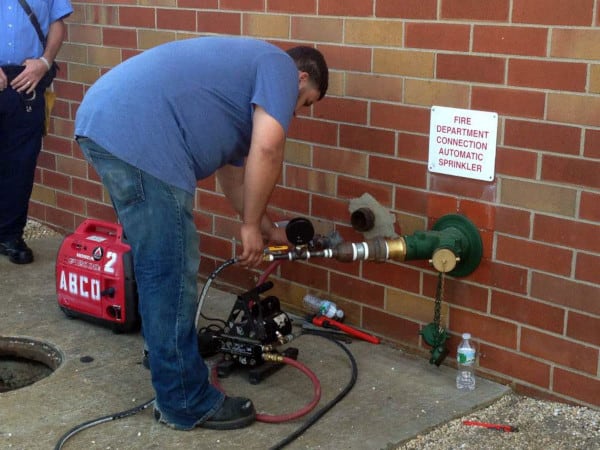
This article examines many of the requirements, conditions, and methodologies of hydrostatic tests for standpipes and sprinklers according to NFPA standards 25 and 13, simplifying this guidance for contractors and building owners.
A Tool Every Inspector Needs
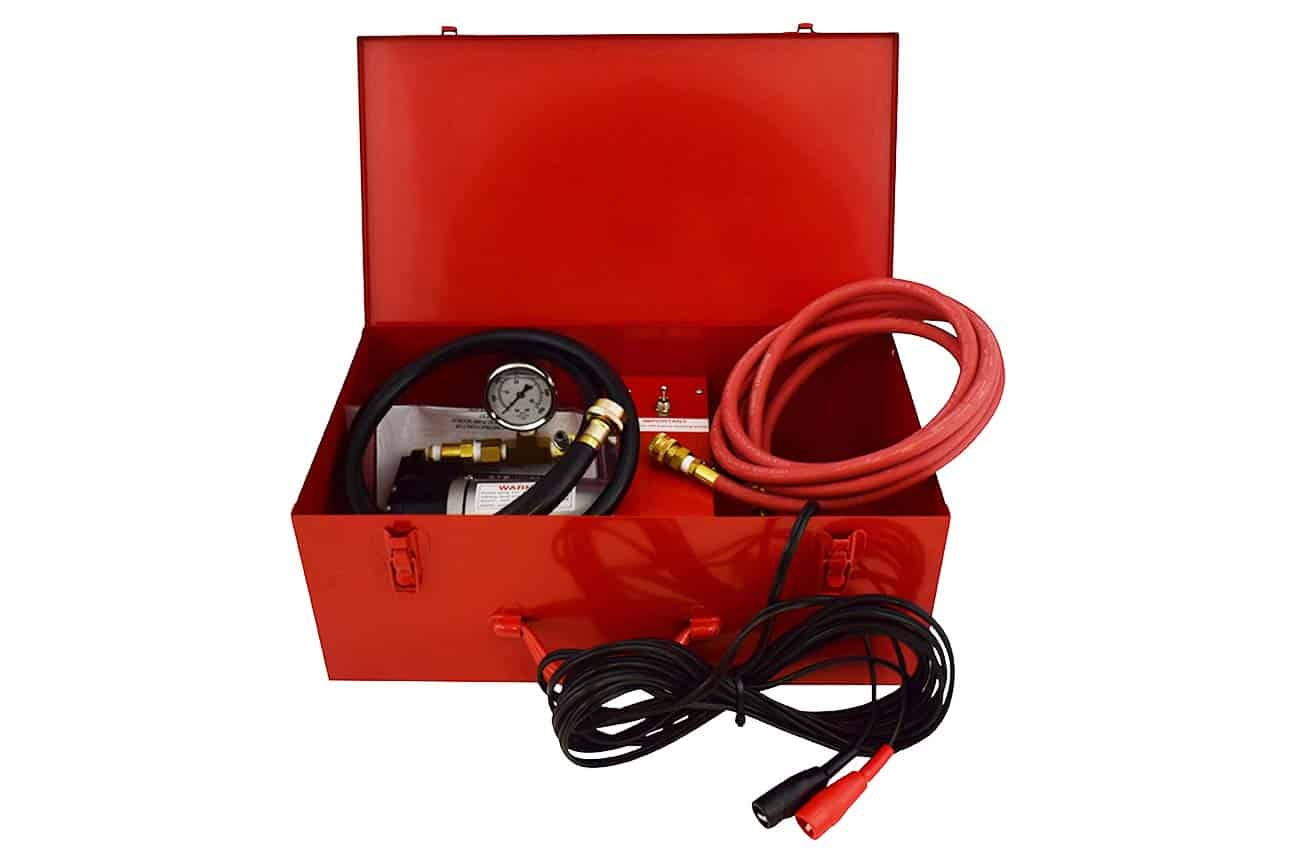
Tru-Test Hydrostatic Test Pump 12 Volt DC
Perform hydrostatic testing on FDCs and more with ease! This battery-powered pump delivers up to 250 PSI & 2.2 GPM with lightweight, corrosion resistant brass piping for hydrostatic testing, small-scale water transfers, and vent-line filling. Works off any 12-volt battery!
Buy Now
The 5-year rule: Hydrostatic tests for standpipe systems
Standpipes are an essential apparatus in the event of a fire, basically serving as fire hydrants for the interior of a building. These systems are composed of pipes that run vertically up the floors of a building with horizontal bridges that allow professional firefighters or building occupants to access water during an emergency. They come in two main varieties: A wet standpipe (manual or automatic) is filled with water at all times, shortening the time it takes to deliver it. Dry standpipes are only filled with water when an action is taken, and they include manual dry standpipes, which require a fire department pumper to supply water through a fire department connection; semi-automatic dry standpipes, which can provide pressurized water after activating an onsite fire pump or control device; and automatic dry standpipes, from which a ready supply of pressurized water can be accessed.
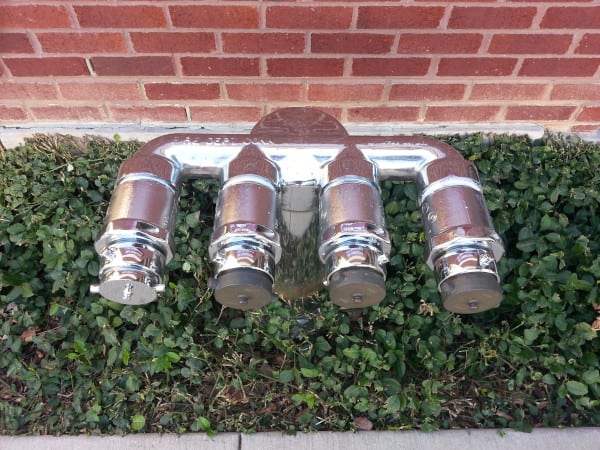
Automatic versions of both types of standpipes are pressurized (wet with water, dry with air), enabling individuals to simply turn a valve to access water—usually, a firefighter who hooks up a hose to a hose connection.
The following types of standpipe systems are exempt from the five-year hydrostatic test, as they contain pressurized air or water within them at all times:
- Manual wet standpipes that are part of a combined sprinkler/standpipe system
- Automatic wet standpipes
- Automatic dry standpipes
All other standpipes must comply with five-year hydrostatic testing. These include:
- Manual wet standpipes that are not part of a combined sprinkler/standpipe system
- Manual dry standpipes
- Semi-automatic dry standpipes
That said, NFPA 25 also states that “The piping from the fire department connection to the fire department check valve shall be hydrostatically tested at 150 psi (10 bar) for 2 hours at least once every 5 years.” A literal interpretation of the code means that this particular section of piping should be hydrostatically tested in all types of standpipe systems, but that isn’t necessarily the case. For an in-depth look at this issue, see this Sprinkler Age article.
From the 2023 Edition of NFPA 25
6.3.2.1* Hydrostatic tests of not less than 200 psi (13.8 bar) pressure for 2 hours, or at 50 psi (3.4 bar) in excess of the maximum pressure, where maximum pressure is in excess of 150 psi (10.3 bar), shall be conducted every 5 years on manual standpipe systems and semiautomatic dry standpipe systems, including piping in the fire department connection.
6.3.2.1.1 Manual wet standpipes that are part of a combined sprinkler/standpipe system shall not be required to be tested in accordance with 6.3.2.1.
NFPA 25 commentary clarifies why manual wet standpipes that are part of sprinkler/standpipe systems don’t need the test: “leaks in this type of system are easily detected visually from the leaking water.”
To see an in-depth review of how to choose a hydrostatic test pump for fire sprinklers and standpipes, check out this blog.
How is a hydrostatic test done on a standpipe system?
To conduct a hydrostatic standpipe test, a qualified fire safety professional needs to introduce water through a hose connected to both a water supply and a test pump at the lowest point in the system, which is typically from the city water supply to the fire department connection. The water must be pressurized to 200 psi or at least an additional 50 psi in systems with a maximum pressure of over 150 psi. The system must stay pressurized for two hours, during which time the inspector looks for signs of a leak.
What are the signs of a leak in a hydrostatic test of a standpipe system?
During the two-hour pressurization, the fire protection professional examines the standpipes for visible leaks in the piping, joints, and fittings, while periodically reading the pressure gauge to look for a drop in pressure.
A significant drop in pressure from 200 psi (or stipulated test pressure) indicates that there is a leak somewhere in the system. If the leak is not visible, it could mean that it is occurring in hard-to-access areas, such as underground piping. Sometimes, these leaks may show themselves after a period of time; for example, a growing wet spot on a concrete floor could indicate a problem underground.
NFPA 25 is unclear about what constitutes an acceptable drop in pressure, noting “Minimum leakage existing only under test pressure is not cause for repair.” That said, the separate guidance from Chapter 6 of NFPA 13 on hydrostatically testing underground pipes in fire sprinkler systems provides some insight:
From the 2022 Edition of NFPA 13
6.10.2.2.1* All piping and attached appurtenances subjected to system working pressure shall be hydrostatically tested at gauge pressure of 200 psi (14 bar) or 50 psi (3.4 bar) in excess of the system working pressure, whichever is greater, and shall maintain that pressure at gauge pressure of ±5 psi (0.3 bar) for 2 hours. [24:10.10.2.2.1]
6.10.2.2.2 Successful test results shall be determined by indication of either a pressure loss less than gauge pressure of 5 psi (0.3 bar) or by no visual leakage. [24:10.10.2.2.2]
Thus, a loss of a little over 5 psi at ground level might indicate a small leak, whereas if the 200-psi test pressure drops to the city water pressure of about 50-60 psi, it indicates that there is a catastrophic failure in the system.
Hydrostatic tests for fire sprinkler systems
In contrast to standpipe systems, there is no regular hydrostatic testing schedule for sprinkler systems. Instead, sprinklers are only hydrostatically tested when they are first installed or whenever the system is modified in a way that impacts more than 20 sprinklers or involves “repair or replacement work affecting the fire department connection.”
From the 2022 Edition of NFPA 13
29.2.1.1 Unless permitted by 29.2.1.3 through 29.2.1.6, all piping and attached appurtenances subjected to system working pressure shall be hydrostatically tested at 200 psi (14 bar) and shall maintain that pressure without loss for 2 hours.
29.2.1.2 Loss shall be determined by a drop in gauge pressure or visual leakage.
29.2.1.3 Portions of systems normally subjected to system working pressures in excess of 150 psi (10 bar) shall be tested as described in 29.2.1.1, at a pressure of 50 psi (3.4 bar) in excess of system working pressure.
29.2.1.8 Piping between the exterior fire department connection and the check valve in the fire department inlet pipe shall be hydrostatically tested in the same manner as the balance of the system. After repair or replacement work affecting the fire department connection, the piping between the exterior and the check valve in the fire department inlet pipe shall be isolated and hydrostatically tested at 150 psi (10 bar).
29.2.1.6* The test pressure shall be read from a gauge located at the low elevation point of the system or portion being tested. The pressures in piping at higher elevations shall be permitted to be less than 200 psi (14 bar) when accounting for elevation losses. Systems or portions of systems that can be isolated shall be permitted to be tested separately.
30.8.1 Modifications to existing piping systems shall require testing at system working pressure.
30.8.1.1 Where modification is made to an existing system affecting more than 20 sprinklers, the new portion shall be isolated and tested at not less than 200 psi (14 bar) for 2 hours.
30.8.1.2 Modifications that cannot be isolated, such as relocated drops, shall require testing at system working pressure.
Chapter 29 also covers various exceptions and special provisions, including rules that apply to testing systems that have fire pumps (29.2.1.4–29.2.1.4.1), exceptions to the test in cold weather (29.2.1.5), and more. Read the chapter closely for more testing rules and conditions that may be applicable to specific situations and systems.

Essentially, the entire system must be tested at (at least) 200 psi for two hours upon installation. Small, subsequent modifications to the system may be tested at normal system working pressure, whereas any larger modification of the system (involving more than 20 sprinklers) must be isolated and again tested at a higher pressure.
How is a hydrostatic test done on a sprinkler system?
Conducting a hydrostatic test on a sprinkler system is very similar to the test for a standpipe system. The water supply and a test pump are used to introduce pressurized water from the lowest access point of the system for two hours. During the testing period, an inspector examines the piping, fittings, and all appurtenances for visible leakage while periodically monitoring the gauge for a significant loss of pressure, which should ideally stay within ±5 of the target psi at the lowest elevation.
Special considerations for hydrostatically testing sprinklers and standpipes
Commercial vs. residential sprinkler systems
Commercial sprinkler systems require a pressure of at least 200 psi for acceptance testing at installation and applicable modifications to the system, whereas residential NFPA 13D sprinkler systems only require hydrostatically testing the system at its normal operating pressure (for systems without a fire department pumper connection). When any system has a fire department pumper connection, it must be hydrostatically tested at the higher pressure in accordance with NFPA 13.
Cold-weather testing
Testing a sprinkler system in weather where water is subject to freezing can be done on an interim basis with air pressure, but this does not permanently replace the need to test the system with water (NFPA 13: 29.2.1.5).
Testing prior to completing construction
Some sprinkler heads can’t be installed until their escutcheons are in place after the ceiling is assembled, which would block visual inspection of the pipes. In these cases, hydrostatic acceptance testing can be done using plugs in place of pendent or sidewall sprinkler heads. (NFPA 13: 29.2.1.9) In addition, plugs may be used in deluge systems to block the open sprinklers, which must, of course, be removed after the completion of the test. (NFPA 13: 29.2.1.10)
Other inspections that can be done during a hydrostatic test
While a professional performs the two-hour hydrostatic test, a general visual inspection of the system is a good idea. Items to look for in addition to leaks include obvious signs of corrosion or physical damage. Visual inspection for compliance with codes such as appropriate labeling of fire safety system components, sufficient lighting, emergency signs, and fire extinguisher placement can also be conducted while examining the piping in the building.
A quality test pump should be used during a hydrostatic test
Hydrostatic testing requires the use of test pumps that are reliable, powerful, and convenient for use in a range of settings. At QRFS, we offer a full selection of Triple R Specialty test pumps that get the job done, from lightweight electric-powered versions with easy-carry handles to heavy-duty, gas-powered models attached to a cart. Our selection of test pumps ranges from 200 to 1,200 maximum PSI and all come equipped with 10 feet of high-pressure hose.
Tru-Test Hydrostatic Test Pump from Triple R – See All Test Pumps Here!
Ordering from QRFS means you get competitive pricing, fast delivery, and exceptional customer service. We stay up to date on all NFPA requirements, ensuring that we offer the right equipment to keep you both compliant and safe.
Do you have more questions about hydrostatic testing and test pumps? Add a comment below, give us a call at 888.361.6662, or fill out our contact form and we’d be happy to assist.
Additional sources and further reading:
1.“Back to Basics: Standpipe Systems.” Firehouse.com.
2.“Everything You Need to Know About the 5-Year Hydrostatic Test.” Capitol Fire Sprinkler.
3. “Standpipe Hydrostatic Testing.” Sprinkler Age.


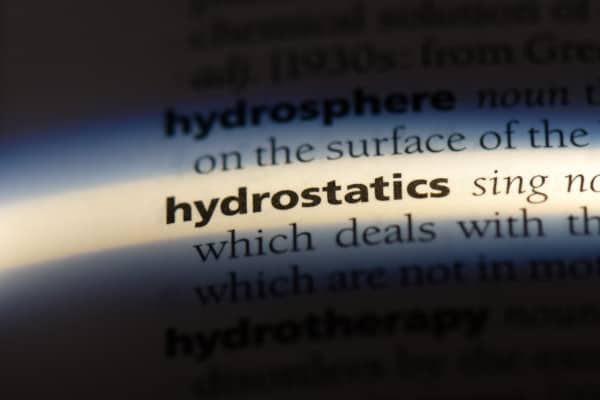
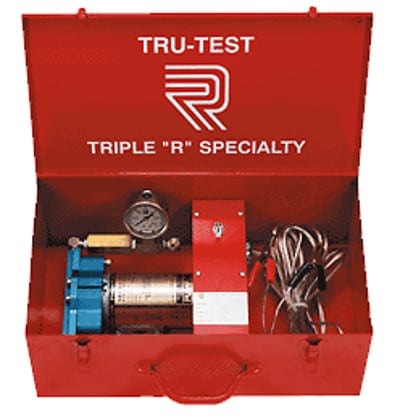
what is the basis of 2 hour duration for hydrotest of pipe